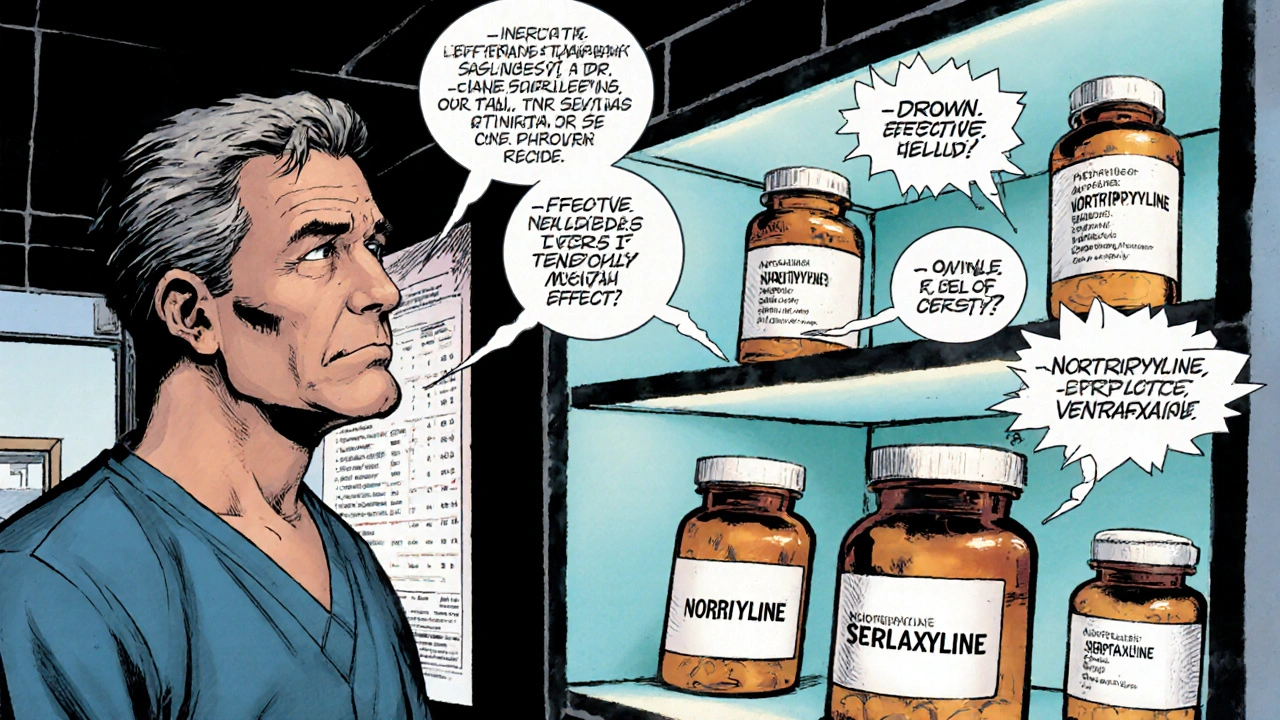Depression Medication: Types, Benefits, and How to Choose
When dealing with depression medication, any drug prescribed or taken to relieve symptoms of depressive disorders. Also known as antidepressants, it plays a key role in restoring mood balance and daily functioning. Understanding depression medication helps you make informed choices. The most common entry point is SSRIs, selective serotonin reuptake inhibitors that increase serotonin availability in the brain. SSRIs are often the first line of treatment because they tend to have fewer side effects than older drugs, work quickly for many patients, and are backed by extensive research. They target major depressive disorder, anxiety, and some chronic pain conditions, making them a versatile pillar of modern psychiatric care. However, SSRIs are not a one‑size‑fits‑all solution; dosage adjustments, onset weeks, and individual metabolism can affect outcomes, so regular follow‑up with a clinician is essential.
Key Categories of Depression Medication
Beyond SSRIs, clinicians rely on several other families to tailor therapy. SNRIs, serotonin‑norepinephrine reuptake inhibitors that boost both serotonin and norepinephrine are popular when patients need extra energy or pain relief, as they address two neurotransmitter systems simultaneously. Tricyclic antidepressants, an older class that blocks reuptake of serotonin and norepinephrine but also affects other receptors can be highly effective for treatment‑resistant cases, yet they carry risks such as dry mouth, constipation, and cardiac conduction changes, so heart monitoring is often required. MAO inhibitors, monoamine oxidase inhibitors that prevent breakdown of key mood chemicals are reserved for atypical depression or when other drugs fail; they demand strict dietary restrictions because certain foods (aged cheese, cured meats, red wine) can trigger dangerous hypertensive crises. Atypical agents like bupropion, mirtazapine, and vortioxetine fill niche gaps—bupropion helps smokers quit, mirtazapine is useful for insomnia and appetite loss, and vortioxetine offers cognitive benefits with a low sexual side‑effect profile. Each class brings a distinct set of attributes (mechanism, side‑effect profile, interaction risk) that clinicians match to a patient’s medical history, symptom pattern, and lifestyle.
The practical side of using depression medication involves more than picking a pill. Safety checks include reviewing current prescriptions, over‑the‑counter supplements, and any herbal remedies (St. John’s wort, for example, can amplify serotonergic effects and cause serotonin syndrome). Monitoring labs—especially liver enzymes for certain tricyclics or blood pressure for MAO inhibitors—helps catch problems early. Counselling patients about the typical onset period (often 4‑6 weeks) reduces frustration, while emphasizing that missing doses or abrupt discontinuation can lead to withdrawal symptoms or relapse. Combining medication with psychotherapy, regular exercise, and sleep hygiene creates a holistic approach that many studies show improves remission rates. Below you’ll find a curated list of articles that dive deeper into each drug class, compare costs, discuss side‑effects, and offer buying guides for popular generics like sertraline (Zoloft) and fluoxetine (Prozac). Use these resources to tighten your treatment plan, stay safe, and get back to feeling like yourself.
Prothiaden (Dosulepin) vs Alternatives: A Practical Comparison
A detailed, side‑by‑side look at Prothiaden (Dosulepin) versus common antidepressant alternatives, covering efficacy, safety, cost and how to choose the right option.

